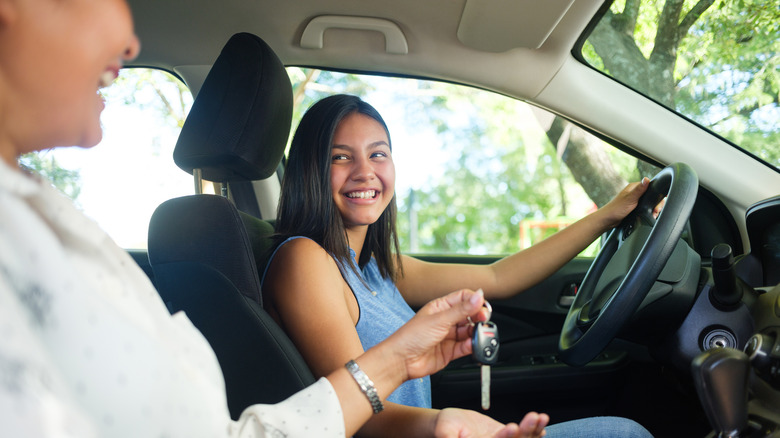Here's Why Your Grandparents Didn't Learn How To Drive Like You Did
For modern Americans, their late teen years are marked with many rites of passage: a first job, high school prom and graduation, and taking their driver's test in order to earn their driver's license. But while this is now seen as a necessary step to move from childhood to adulthood, for older generations this was not the case. Motor vehicle registration actually predates driver licensing in the United States; New York was the first state to register vehicles in 1901 and by 1918 all 48 states required vehicles to be registered. The technology behind licensing has evolved as well; Arizona now issues digital driver's licenses, which can be added to your Apple Wallet or Samsung Wallet.
In 1903, Massachusetts and Missouri became the first states to require a license to operate a motor vehicle, and in 1908 Rhode Island began testing drivers before issuing licenses. By 1935, 39 states required licenses to drive, and by 1959, when Alaska and Hawaii had brought the number of states to 50, every state required drivers to take a test before they could be issued a driver's license.
Driver's tests vary from state to state
Currently, all 50 states and the District of Columbia require both a written and road test for first-time licensees. The age of eligibility varies by state; drivers in Idaho, Montana, and the Dakotas can be fully licensed at 16 while in many states full driving privileges aren't granted until age 18. The formats for written and road testing also vary widely between states: a 2019 study ranked Washington the hardest state in which to get a license, with only about half of test-takers passing the written portion on the first try.
Washington also has the most expensive licensing process in the country, with the test and license together costing drivers $85. A South Dakota license costs just $28, and South Dakota also ranked as the easiest state in which to earn a license, based in part on its simple road test, which tests just six driving maneuvers. Washington's test was the nation's most complex, checking drivers on 19 different criteria, including hill parking and backing up on a curve.

